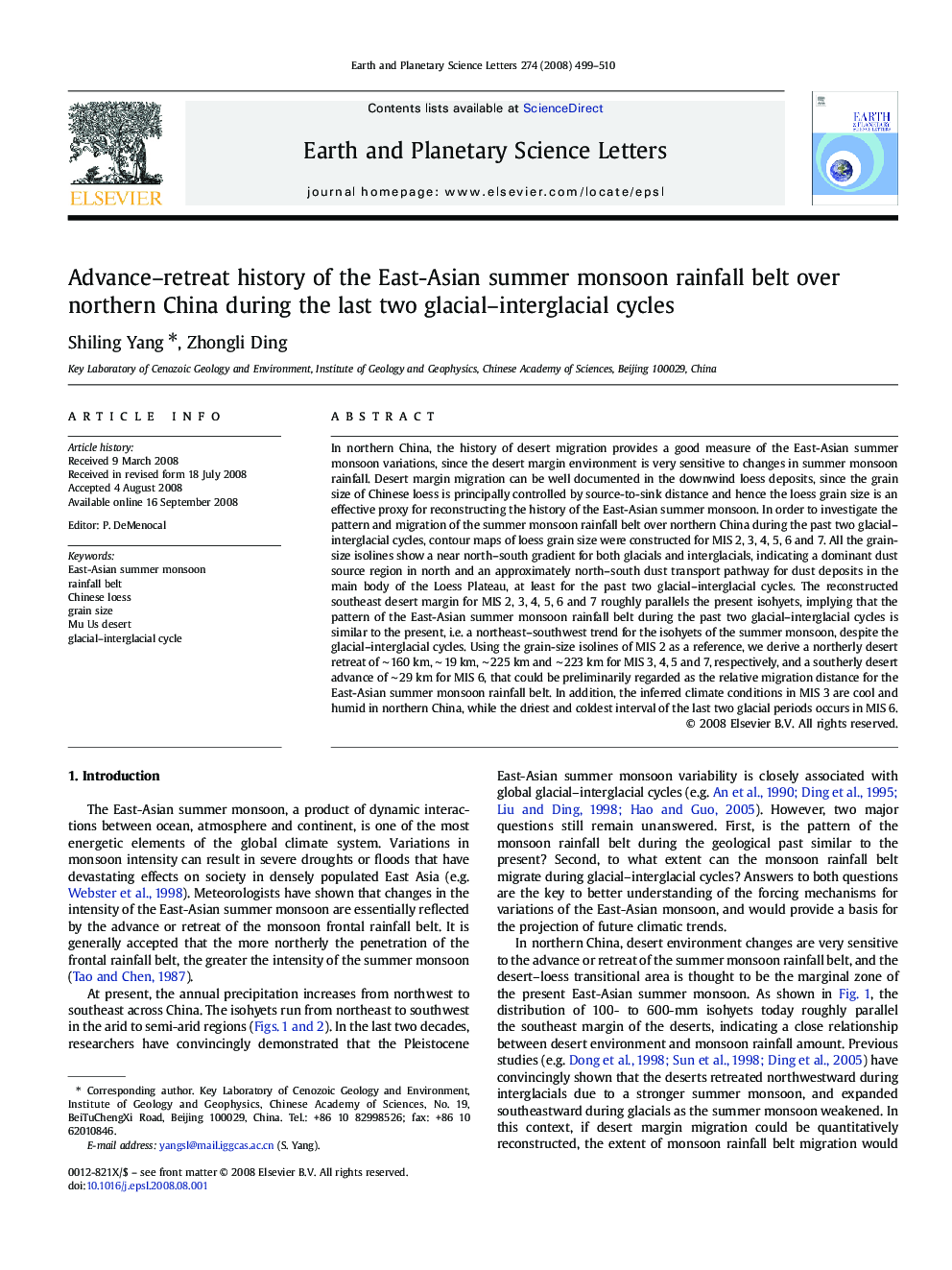| کد مقاله | کد نشریه | سال انتشار | مقاله انگلیسی | نسخه تمام متن |
|---|---|---|---|---|
| 4679577 | 1634887 | 2008 | 12 صفحه PDF | دانلود رایگان |

In northern China, the history of desert migration provides a good measure of the East-Asian summer monsoon variations, since the desert margin environment is very sensitive to changes in summer monsoon rainfall. Desert margin migration can be well documented in the downwind loess deposits, since the grain size of Chinese loess is principally controlled by source-to-sink distance and hence the loess grain size is an effective proxy for reconstructing the history of the East-Asian summer monsoon. In order to investigate the pattern and migration of the summer monsoon rainfall belt over northern China during the past two glacial–interglacial cycles, contour maps of loess grain size were constructed for MIS 2, 3, 4, 5, 6 and 7. All the grain-size isolines show a near north–south gradient for both glacials and interglacials, indicating a dominant dust source region in north and an approximately north–south dust transport pathway for dust deposits in the main body of the Loess Plateau, at least for the past two glacial–interglacial cycles. The reconstructed southeast desert margin for MIS 2, 3, 4, 5, 6 and 7 roughly parallels the present isohyets, implying that the pattern of the East-Asian summer monsoon rainfall belt during the past two glacial–interglacial cycles is similar to the present, i.e. a northeast–southwest trend for the isohyets of the summer monsoon, despite the glacial–interglacial cycles. Using the grain-size isolines of MIS 2 as a reference, we derive a northerly desert retreat of ∼ 160 km, ∼ 19 km, ∼ 225 km and ∼ 223 km for MIS 3, 4, 5 and 7, respectively, and a southerly desert advance of ∼ 29 km for MIS 6, that could be preliminarily regarded as the relative migration distance for the East-Asian summer monsoon rainfall belt. In addition, the inferred climate conditions in MIS 3 are cool and humid in northern China, while the driest and coldest interval of the last two glacial periods occurs in MIS 6.
Journal: Earth and Planetary Science Letters - Volume 274, Issues 3–4, 15 October 2008, Pages 499–510